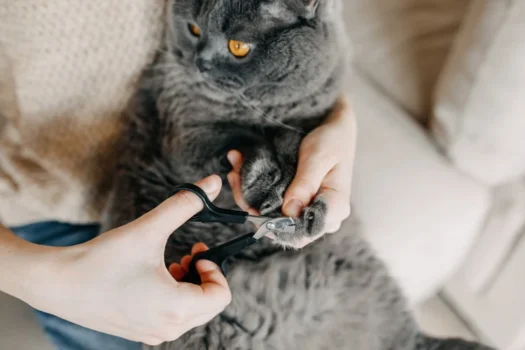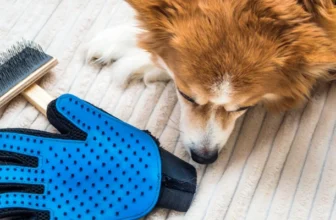If you’re a proud owner of an American Shorthair, you surely know that keeping their grooming in check is essential for their overall health and happiness. One of the most important parts of grooming is nail clipping, but it’s not always clear how often to do it or how to do it safely. It can also be a daunting task if you’re a first-time cat owner. That’s why we’ve created this guide – a comprehensive set of FAQs about clipping your American Shorthair’s nails. We’ll go through everything you need to know, from why you should clip their nails to how to do it without causing any harm. So let’s get started!
Why do I need to clip my American Shorthair’s nails?
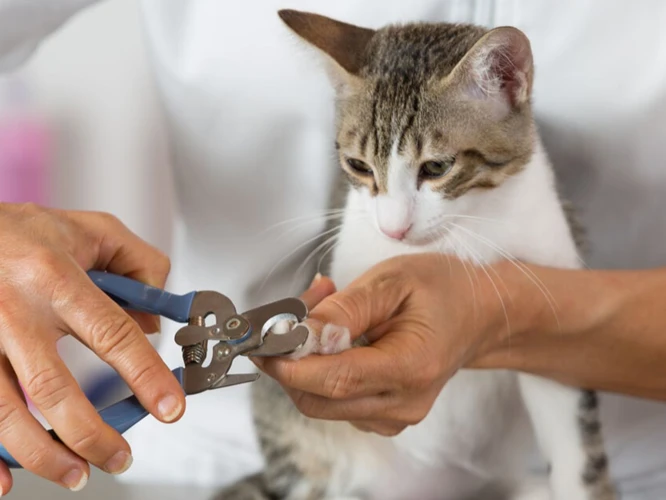
Clipping your American Shorthair’s nails is an essential part of their grooming routine. It not only improves their paws’ health but also enhances the hygiene of your home by reducing the chances of scratches and damage. Regular clipping can also prevent your furry friend from injuring themselves by getting their nails caught in household objects. So, let’s delve into the reasons why you need to clip your American Shorthair’s nails and how it can benefit both you and your feline companion. For more information, visit importance-clipping-american-shorthair-nails.
Paws Health
Regularly clipping your American Shorthair’s nails is important for their paw health. Long nails can cause discomfort, pain, or even an infection if they start to curl and grow into the paw pad.
Long nails can affect their ability to walk and run comfortably. It could even lead to bad posture, hindering the movement of their legs.
Here’s a table showing the potential paw health problems that could occur if you neglect to clip your American Shorthair’s nails:
| Paw Health Problem | Description |
|---|---|
| Ingrown nails | If the nails are too long, they can curl and grow into the paw pad causing pain and discomfort. |
| Splayed toes | Long nails can cause the toes to spread apart, leading to splayed toes. This can be painful and hinder their movement. |
| Unnatural gait | If their nails are too long, it could cause them to walk with an unnatural gait that could cause strain on their legs and pain over time. |
Keeping your American Shorthair’s nails trimmed can prevent these potential paw issues. If you’re unsure how to clip your cat’s nails safely, check out our article on safe clipping techniques. Additionally, if you need to know what tools to use, check out our post on tools for clipping a Shorthair’s nails. Avoid making common mistakes while clipping nails by reading our post on common mistakes.
Scratching
One reason to clip your American Shorthair’s nails is to prevent them from scratching people or furniture. It’s important to remember that scratching is a natural behavior for cats and serves many purposes. Cats scratch to mark their territory, stretch their muscles, and remove the dead outer layer of their claws. However, it can be frustrating when they scratch your favorite couch or carpet.
Clipping your cat’s nails can help prevent damage to your furniture and also reduce the likelihood of them accidentally scratching you during playtime. When a cat’s nails are too long, they can become curved and sharp which can cause additional damage when scratched. By clipping their nails regularly, you can ensure that they remain at a safe and comfortable length.
To redirect your cat’s scratching behavior, it’s important to provide them with appropriate scratching surfaces such as scratching posts or pads. These surfaces should be placed in areas where your cat spends the most time and encourage them to scratch there instead of on your furniture. Consistent reinforcement and positive reinforcement can also help train your cat to use these surfaces.
Keeping your cat’s claws trimmed can also help prevent them from getting caught on objects or surfaces around your home, which can be painful for your cat and damage their nails. By regularly trimming their nails, you can help keep your cat comfortable and reduce their risk of getting injured.
Remember, if you’re having trouble clipping your cat’s nails or are unsure about how to do it safely, consult with your veterinarian or a professional groomer for advice. They can provide you with additional tips and resources to ensure you and your cat are safe and happy during the nail-clipping process.
For more tips and tricks on trimming your American Shorthair’s nails, check out our related article: “10 Tips for Trimming Your American Shorthair’s Nails”.
Home Hygiene
Maintaining proper home hygiene is one of the important reasons why you need to clip your American Shorthair’s nails. Long and dirty nails can harbor bacteria, dirt, and other harmful pathogens, which could lead to infections and diseases not only for your cat but for everyone in your household as well. By regularly grooming your cat’s nails, you can prevent the accumulation of dirt and germs, reducing the risks of illnesses.
Here are some tips for maintaining excellent home hygiene:
| Tip | Description |
|---|---|
| Trim regularly | Clip your cat’s nails every two to three weeks to avoid overgrowth, especially if your cat is an indoor pet. Overgrown nails can get caught on carpets and other rough surfaces, increasing the likelihood of injuries and making it difficult for your cat to walk. |
| Clean paws | Wipe your cat’s paws with a damp cloth after they come back inside from playing outside or using their litter box. This will remove any dirt, bacteria, or fecal material that may have accumulated on their paws, ensuring that your home stays clean and free from harmful pathogens. |
| Provide a litter box | Provide your cat with a clean litter box, and ensure that you change the litter regularly. Dirty litter boxes can produce a foul odor and spread germs throughout your home, potentially leading to respiratory infections or other diseases. |
| Clean frequently | Clean your cat’s bedding and toys regularly to prevent the accumulation of dirt and bacteria. Use hot water and a mild detergent to wash their items and dry them in a well-ventilated area. This will reduce the risks of infections for your cat and yourself. |
By following these simple tips, you can maintain excellent home hygiene and reduce the risks of illnesses for your American Shorthair and everyone in your household. Clipping your cat’s nails is an essential part of their hygiene routine, which will help keep them healthy and happy.
How often should I clip my American Shorthair’s nails?
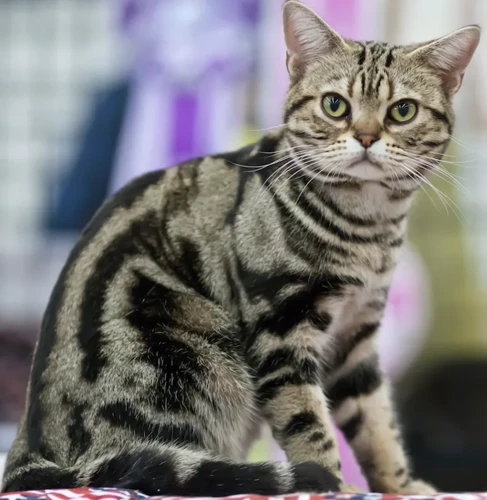
As a pet owner, you may be wondering how often you should clip your American Shorthair’s nails. While it depends on certain factors, it’s important to keep your cat’s nails at a healthy length to prevent any discomfort or risk of injury. Let’s explore different aspects of nail trimming that will help you determine the optimal time for your cat’s next grooming session.
Age and Activity Level
Nail clipping frequency for American Shorthairs is highly dependent on your cat’s age and activity level. Kittens have sharp little claws that can scratch, so it’s important to start increasing the frequency of nail clippings at around two months old. Adult cats require more infrequent nail clippings, usually once a month. As cats grow older and become less active, their nails may not wear down as quickly. Senior cats require more frequent nail clippings to avoid overgrowth and discomfort.
Activity level is another important factor to consider. American Shorthairs who are more active, such as those with outdoor access, will naturally wear down their nails more often. Indoor cats, on the other hand, will likely need more frequent nail clippings since their nails will not wear down as quickly on carpeted surfaces.
It’s important to keep an eye on your American Shorthair’s nails and look for signs of overgrowth, such as nails that curl or hook. If you hear clicking sounds when your cat walks on hard surfaces or if they frequently get stuck on fabrics and carpets, it’s time to clip their nails.
To help you keep track of your cat’s nail clipping needs, here is a frequency chart based on age and activity level:
– Kittens (less than 6 months): every 2-3 weeks
– Active adult cats (6 months to 10 years): once a month
– Senior cats (10 years and older): every 2-3 weeks
Remember, these are just guidelines and your cat’s nail clipping needs may vary based on their individual circumstances. Always monitor their nails and adjust the frequency as needed.
Signs of Overgrowth
As a responsible pet owner, it is important to keep an eye on your American Shorthair’s nails to ensure that they do not become overgrown. Overgrown nails can cause discomfort and even lead to health problems for your feline friend. Here are some signs of overgrowth to look out for:
| Signs of Overgrowth | Description |
|---|---|
| Clicking sound when your cat walks | Overgrown nails can cause a clicking sound when your cat walks on hard surfaces, indicating that it’s time for a trim. |
| Difficulty walking | If your American Shorthair is having trouble walking, running, or jumping, it may be due to overgrown nails. |
| Ingrown nails | Overgrown nails can grow into your cat’s paw pads, causing pain and discomfort. |
| Nail curling | If your cat’s nails are starting to curl, it’s a sign that they are becoming overgrown and in need of a trim. |
| Scratching furniture | While scratching is natural for cats, if they are scratching furniture more than usual, it could be a sign that their nails are too long. |
If you notice any of these signs in your American Shorthair, it’s time to consider clipping their nails. Remember, overgrown nails can be uncomfortable for your cat and even lead to health problems, so it’s important to keep them properly trimmed.
Frequency Chart
It can be difficult to know exactly how often to clip your American Shorthair’s nails, but there are some general rules of thumb you can follow. The frequency of nail trimming largely depends on your cat’s age and activity level.
For Kittens: At around four weeks old, kittens begin to develop retractable claws. Around this time, you can start handling their paws and getting them used to nail trimming. Start with weekly nail trimming sessions, gradually increasing the time between sessions if their nails aren’t growing too quickly.
For Adult Cats: Adult cats need their nails trimmed less frequently than kittens, usually every two to three weeks. But if you have a particularly active cat, their nails may grow a bit faster and need attention more often.
For Senior Cats: As your American Shorthair gets older, their nails may grow more slowly and become less sharp. For senior cats who are less active, nail trimming every three to four weeks is typically sufficient.
Pay attention to your cat’s nails, and if they are touching the ground when your cat is standing or walking, it’s definitely time for a trim. Another clue is the sound of their nails clicking on hard surfaces, like tile or hardwood floors.
Remember that individual cats may have their own unique needs, so it’s important to monitor their nails regularly and adjust your trimming schedule as necessary. As always, if you’re unsure about how often to trim your American Shorthair’s nails, consult with your veterinarian for guidance.
What tools do I need to clip my American Shorthair’s nails?
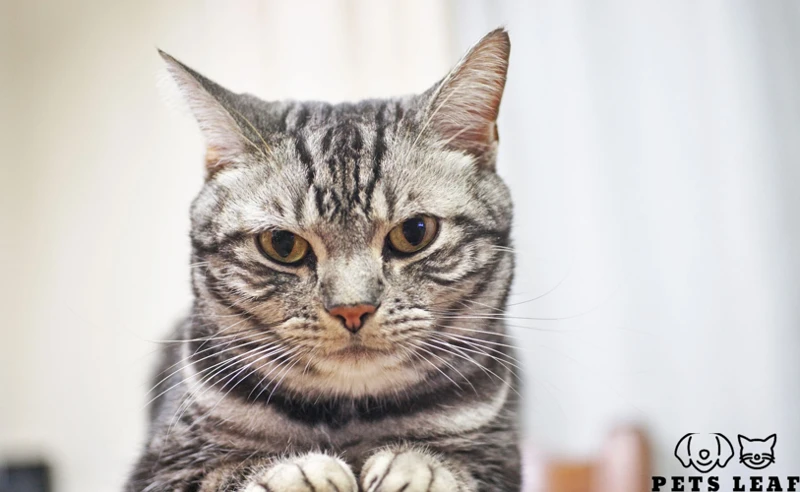
Clipping your American Shorthair’s nails may seem like a daunting task, but with the right tools and techniques, it can be done easily and safely. You will need a few essential tools to get started, and each one has a specific function in the nail clipping process. So, let’s discuss the essential tools that you will need to ensure a successful nail clipping experience for both you and your feline friend.
Nail Clippers
When it comes to clipping your American Shorthair’s nails, one of the most important tools you’ll need is a good pair of nail clippers. Not all clippers are created equal, however, and it’s important to choose the right ones to make the process as easy and comfortable as possible. Here are some things to keep in mind when selecting nail clippers for your American Shorthair:
| Types of Nail Clippers | Features | Pros | Cons |
|---|---|---|---|
| Scissor Clippers | Curved or straight blades | Easy to control; good for thick nails | May crush or split nail |
| Gullotine Clippers | Hole for inserting nail; blade slides across | Good for small nails; less grinding required | Blade can become dull quickly |
| Guillotine Scissor Clippers | Combines features of both scissor and gullotine clippers | Easy to use on small or large nails | May crush or split nail if not used correctly |
As you can see, there are a few different kinds of nail clippers you can use for your American Shorthair. Scissor clippers are generally the most popular, but they can be a bit tricky to use if you’re not experienced. Gullotine clippers are easier to use on small nails, but the blade can become dull quickly. Guillotine scissor clippers are a good compromise, combining features of both types of clippers.
No matter what type of clippers you choose, make sure they are sharp and in good condition. Dull clippers can crush or split the nail, causing pain and bleeding. You may also want to consider getting a clipper with a safety guard, which will help prevent you from cutting the nail too short and hitting the quick.
Nail File
Having a nail file in your tool kit is just as important as having nail clippers when it comes to clipping your American Shorthair’s nails. This tool helps to smooth out any rough edges or snags on your cat’s nails after clipping them. Additionally, it helps to prevent the nails from getting caught in furniture, clothes, or other surfaces.
One of the key things to consider when choosing a nail file is the texture of the file itself. A fine-grit file is best suited to cats with delicate nails, while a coarse-grit file is better for thicker nails. A metal file is an excellent option for cats that have very hard nails, while an emery board is a great choice if your cat has softer nails.
Table: Types of Nail Files
| Type of Nail File | Texture | Suitable for |
|---|---|---|
| Fine-grit file | Smooth surface | Cats with delicate nails |
| Coarse-grit file | Rough surface | Cats with thicker nails |
| Metal file | Hard surface | Cats with very hard nails |
| Emery board | Soft surface | Cats with softer nails |
It’s important to use the nail file carefully and delicately, so as not to cause any distress or discomfort to your cat. Holding your cat’s paw gently, you should gently file the nails in one direction, taking care not to file too much or too close to the quick. If you are unsure about the best way to use a nail file, speak to your vet or a professional groomer for advice and guidance.
In Conclusion, having a nail file as part of your American Shorthair’s nail clipping routine is an essential step in ensuring that their nails are healthy and well-maintained. With careful use, it can help to prevent snagging and damage, as well as ensuring that your cat’s nails look neat and tidy.
Blood Stop Powder
One crucial tool to have on hand when clipping your American Shorthair’s nails is blood stop powder. This product is also known as styptic powder, and it can be a lifesaver if you accidentally cut your cat’s quick, which is the pink part of your cat’s nail that contains blood vessels.
Here are some key features of blood stop powder that you should be aware of:
- Ingredient: Blood stop powder has a clotting agent, such as aluminum chloride, to help stop bleeding.
- Application: To use blood stop powder, first, locate the bleeding nail and apply a small amount of powder directly to the affected area using a cotton swab or your fingertip. Apply gentle pressure for about 5-10 seconds. The powder should stop the bleeding.
- Cautions: Be aware that the powder may cause slight discomfort for your cat when applied, but it should be brief. Also, make sure to store the powder in a dry and cool place. Otherwise, its effectiveness might be compromised.
Blood stop powder is an essential tool to have when clipping your American Shorthair’s nails. It can help you avoid the discomfort and potential danger of a bleeding quick and provide a safe and effective way to stop bleeding.
How can I safely clip my American Shorthair’s nails?
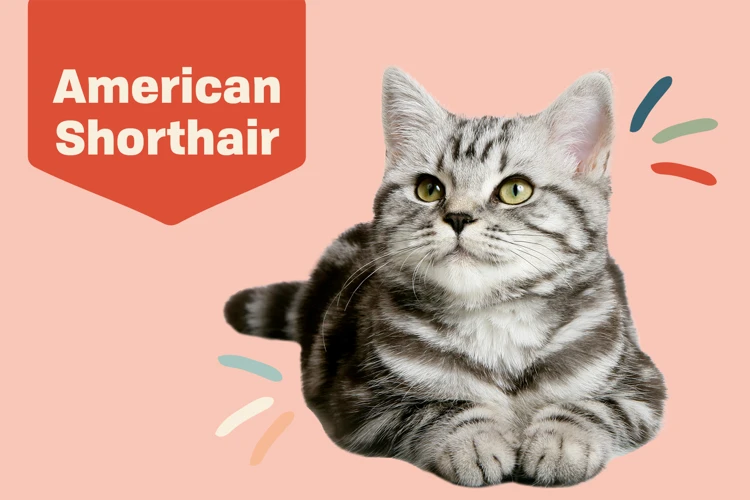
Clipping your American Shorthair’s nails can seem like a daunting task but with the proper safety measures in place, it can be a smooth and successful process. It’s important to keep your furry friend calm and still while you focus on a steady hand to clip their nails safely. Let’s go through the steps and precautions you can take to make sure you and your cat are both comfortable during this procedure.
Restraint Techniques
When it comes to clipping your American Shorthair’s nails, proper restraint techniques are essential to ensure both yours and your pet’s safety. Here are some effective methods for safely restraining your cat during the nail clipping process:
- Scruffing: This technique involves grabbing the loose skin at the back of your cat’s neck and holding it firmly. It is a natural form of restraint that is often used by mother cats when carrying their kittens. However, this method should only be used on adult cats who are in a relaxed state, as it can be painful and stressful for cats who are anxious or agitated.
- Blanket Wrap: This technique involves wrapping your cat in a blanket or towel, leaving only the paws exposed for nail clipping. This method is useful for cats who are particularly anxious or difficult to restrain, as it provides a sense of security and comfort.
- Hold and Scruff: This technique involves holding your cat securely by the chest with one hand while scruffing them with the other hand. This is a useful method for cats who are a bit squirmy, as it restricts their movement while also providing some comfort.
- Belly-Up: This technique involves gently rolling your cat on their back and holding them securely in place. It is a good method for cats who are more relaxed and less likely to squirm, as it provides an unobstructed view of the nails for easy clipping.
Remember, always handle your American Shorthair with care and respect during nail clipping, using these restraint techniques to ensure their safety and comfort.
Clipping Technique
To start the clipping process, it is essential to understand the correct clipping technique to avoid injuring your American Shorthair while ensuring that their nails are trimmed successfully. Here are a few steps to follow for effective nail clipping:
- Hold Your Cat Steady: Begin by holding your cat’s paw firmly in your non-dominant hand; this helps to stabilize their paw and keep it still. During this process, you should ensure that your cat is calm, and if they start to show signs of distress, stop for a break.
- Identify the Quick: The quick is the pink-colored area visible in the center of your cat’s nail. You should avoid clipping into the quick (the living part of the nail), which may cause bleeding and pain. If your cat has black nails, use a flashlight to visualize the quick as it is harder to see.
- Trim the Nail: After identifying the quick, use a sharp nail clipper to cut the nail at a 45-degree angle from the quick. You should avoid cutting too close to the quick, and it’s better to clip less rather than cut too much. It’s essential to make a clean, swift cut to avoid crushing the nail.
- Smooth the Edges: After cutting, use a nail file to smooth the edges of the nail. This helps to avoid snagging and scratching, which can be painful for your American Shorthair.
- Reward Your Cat: After clipping your cat’s nails, be sure to give them a treat and praise them for a job well done. This positive reinforcement helps to make nail clipping a positive experience for both you and your cat.
Following these clipping techniques can help you keep your American Shorthair’s nails healthy and well maintained without causing any discomfort or pain to your pet.
Dealing with Accidents
Accidents can happen even with the most experienced cat owners. It’s important to stay calm and take appropriate action if an accident occurs during nail clipping. Here are some steps to take if an accident occurs:
| Accident | Action |
|---|---|
| Cut the quick | If you accidentally cut the quick, your cat may start bleeding. Apply some blood stop powder to the affected area and apply gentle pressure until the bleeding stops. You can also use a clean cloth or tissue to apply pressure. It’s important to stay calm and reassure your cat to prevent them from becoming overly anxious. |
| Too much struggling | If your cat is struggling too much during the nail clipping process, it may be best to stop and try again later. Forcing your cat to stay still can increase their anxiety and make future nail clipping sessions more difficult. Take a break, give your cat some time to calm down, and try again when they are more relaxed. |
| Bitten or scratched | If your cat becomes aggressive and bites or scratches you during nail clipping, stop immediately and seek medical attention if necessary. You may need to visit a doctor if the injury is deep or if you suspect an infection. It’s important to take appropriate measures to prevent the injury from worsening. |
Remember, accidents can happen even with the best intentions. It’s important to be prepared for all possibilities and take the necessary steps to keep yourself and your American Shorthair safe during nail clipping sessions.
What are some tips for successful nail clipping?
Clipping your American Shorthair’s nails can be a daunting task, especially if you’re a new cat owner. But with these helpful tips, you can make the process smoother and more successful. Implementing a reward system can encourage your cat to behave during nail clipping, while choosing the right timing and location can also play a big role. Keep reading to learn more about these tips and how to make nail clipping a stress-free experience for both you and your feline friend.
Reward System
Clipping your American Shorthair’s nails can be a challenge, especially if they are not accustomed to it. However, a reward system can be an effective way to make the process more enjoyable for your pet. Here are some tips to implementing a reward system:
- Choose the right treats: Select treats that your American Shorthair loves. It could be something as simple as a piece of kibble or a small bite of chicken. Once you have the treat selected, keep it nearby during the nail clipping process.
- Positive reinforcement: Pair each successful clip with a reward. Provide your cat with the treat and plenty of cuddles and praise. You can also use a clicker to create a positive association with the treat and the clipping process.
- Be patient: If your cat is not willing to cooperate, don’t give up. Keep trying and do not scold your cat or punish them. This can create negative associations with the reward system and make the process even harder.
- Build up gradually: If your cat is particularly adverse to nail clipping, start off with small sessions and work up to a full clipping. For instance, start with clipping one nail at a time and reward your cat every time a nail is clipped successfully.
By using a reward system, you can instill positive associations with nail clipping and make it a more enjoyable process for both you and your American Shorthair. With patience and persistence, your cat will learn to love the process!
Timing
When it comes to clipping your American Shorthair’s nails, timing is everything. It’s important to choose the right time of day when your cat is relaxed and calm. Additionally, you want to avoid clipping your cat’s nails right before or after mealtime or playtime.
Morning vs. Evening
Some cats are more active during certain times of the day, so it’s important to pay attention to your cat’s behavior. If your cat is more active in the morning, it might be easier to clip their nails in the evening when they are more relaxed. On the other hand, if your cat is a night owl, you might have better luck clipping their nails in the morning when they are still groggy.
After Playtime or Exercise
It’s important to avoid clipping your cat’s nails right after playtime or exercise, as their paws might still be sensitive from running around and jumping. This could make nail clipping a painful experience for your cat and make them more resistant to future sessions.
Before or After Mealtime
It’s also a good idea to avoid clipping your cat’s nails right before or after mealtime. Right before mealtime, your cat might be too hungry and distracted to sit still, while right after mealtime they might be too full and lethargic.
Scheduling a Routine
One way to ensure that you choose the right time for nail clipping is by scheduling a routine. This involves picking a specific time of day, such as mid-morning or early evening, and consistently clipping your cat’s nails at that time. Over time, your cat will become accustomed to the routine and will be more cooperative during nail clipping sessions.
When it comes to timing, there’s no one-size-fits-all solution. It’s important to pay attention to your cat’s behavior and schedule sessions when they are most likely to be relaxed and calm. By doing so, you’ll make nail clipping a more pleasant and successful experience for both you and your cat.
| Morning vs. Evening | After Playtime or Exercise | Before or After Mealtime |
|---|---|---|
| If your cat is more active in the morning, it might be easier to clip their nails in the evening when they are more relaxed. | Avoid clipping your cat’s nails right after playtime or exercise, as their paws might still be sensitive from running around and jumping. | Avoid clipping your cat’s nails right before or after mealtime as they might be too distracted or lethargic. |
| If your cat is a night owl, you might have better luck clipping their nails in the morning when they are still groggy. | Clipping your cat’s nails immediately after exercise or playtime could be a painful experience for your cat and make them more resistant to future sessions. |
Location
Choosing the right location for clipping your American Shorthair’s nails is crucial for their safety and comfort. Here are some factors to consider:
| Factor | Description |
| Comfort | Your cat should feel at ease and relaxed. Select a place where your American Shorthair feels comfortable and can comfortably stretch out. |
| Lighting | Adequate lighting is crucial to ensure that you can see the quick (vein). Selecting the right location with natural lighting will make the nail clipping process easier and safer. |
| Surface | It’s essential to choose a surface that is stable and slip-resistant to avoid your pet slipping and injuring themselves. A rug or towel can also be placed on the surface to provide a better grip for your pet’s paws. |
| Distraction-free | Avoid locations with distractions such as loud noises or other pets to ensure that your American Shorthair remains calm and cooperative during the nail clipping process. |
| Accessibility | Choose a location where you can easily access your cat’s paws and see what you’re doing. A location with sufficient space to maneuver around your pet will also make the process smoother. |
By considering these factors and selecting the right location, you can help ensure that clipping your American Shorthair’s nails is as safe and easy as possible.
Conclusion
After reading through this article on FAQs about clipping your American Shorthair’s nails, you should now have a better understanding of why it’s important to clip your furry friend’s nails, how often you should do it, what tools you need, how to safely clip their nails, and some tips for success.
Remember to prioritize your American Shorthair’s health by regularly clipping their nails, as this will prevent potential health issues and ensure they’re comfortable in their daily lives. You should also prioritize positive reinforcement with rewards and timing that works best for your pet, in addition to choosing a location where they feel comfortable and safe.
It’s important to always use the right tools and techniques when clipping your cat’s nails, as well as staying calm and attentive to any accidents that may occur. Blood stop powder can come in handy in case of accidents, but making sure you don’t cut an area with visible blood vessels is important in avoiding such situations.
By regularly clipping your American Shorthair’s nails, you’ll also improve your home hygiene and protect your items from potential scratching damage. With all of this in mind, stay attentive to your cat’s needs and preferences, and don’t hesitate to seek advice from your vet if you have any further questions or concerns. Remember, keeping your cat’s nails trimmed is all about keeping them healthy, comfortable, and happy in their daily life with you.
Frequently Asked Questions
Can I use human nail clippers to clip my American Shorthair’s nails?
No, it’s not recommended to use human nail clippers because they don’t provide enough strength to cut through your cat’s thick nails. Instead, use special cat nail clippers that are designed to handle the task.
What will happen if I don’t clip my American Shorthair’s nails regularly?
If you don’t clip your American Shorthair’s nails regularly, they can grow too long and become painful for your cat. Long nails can also get stuck in carpets and furniture, causing damage and potentially injuring your cat.
How can I tell if my American Shorthair’s nails are too long?
You can tell if your American Shorthair’s nails are too long if you can hear them clicking on the floor while your cat is walking around. Additionally, if the nails are curling under the paw pad or if your cat is scratching excessively, their nails may be too long.
Can I declaw my American Shorthair instead of clipping their nails?
Declawing is not recommended as it involves removing a part of your cat’s toes and can cause long-term pain and behavioral issues. It’s best to regularly clip your American Shorthair’s nails instead.
What should I do if I accidentally cut my cat’s quick?
If you accidentally cut your cat’s quick (the pink part of the nail that contains blood vessels), it can cause bleeding and pain. Use blood stop powder to stop the bleeding and offer your cat treats and comfort to help ease the pain.
Can I give my American Shorthair a bath before clipping their nails?
It’s not necessary to give your American Shorthair a bath before clipping their nails. However, if your cat’s nails are particularly dirty, you can wipe their paws with a damp cloth to remove any dirt or debris.
What’s the best location to clip my American Shorthair’s nails?
Choose a well-lit, comfortable location to clip your American Shorthair’s nails. Ideally, sit on the floor with your cat on your lap, or have someone hold them steady on a flat surface.
Should I use nail file after clipping my American Shorthair’s nails?
Yes, using a nail file after clipping your American Shorthair’s nails can help smooth out any rough edges and prevent them from snagging on carpets or furniture.
What should I do if my American Shorthair doesn’t like getting their nails clipped?
Introduce your American Shorthair to nail clipping gradually and offer them treats and praise for good behavior. You can also try distracting them with toys or using a towel or blanket to provide a sense of security during the process.
Can I clip my American Shorthair’s nails too short?
Yes, if you clip your American Shorthair’s nails too short, it can cause bleeding and pain. Always aim to cut just the tip of the nail and avoid cutting into the quick.

